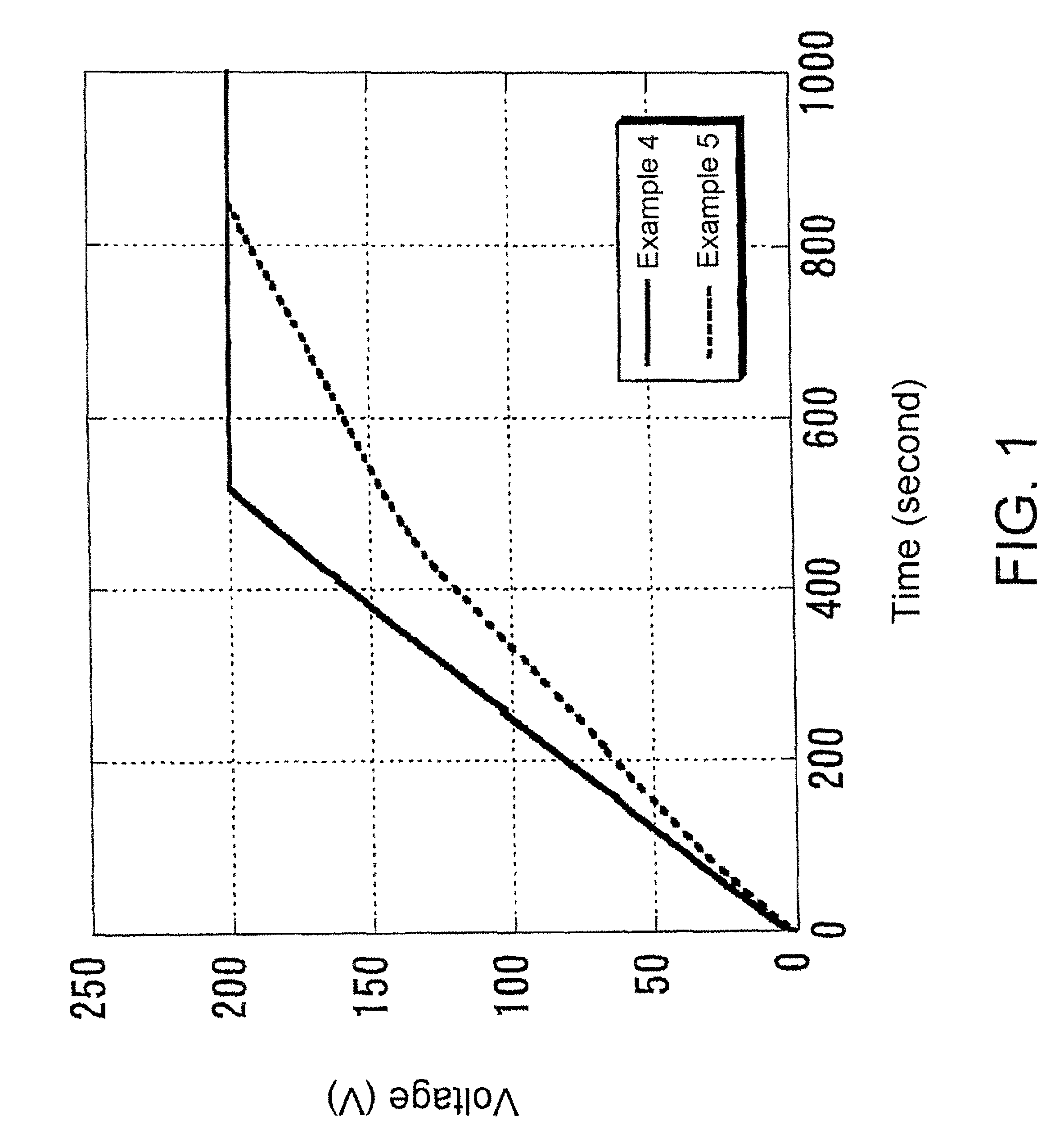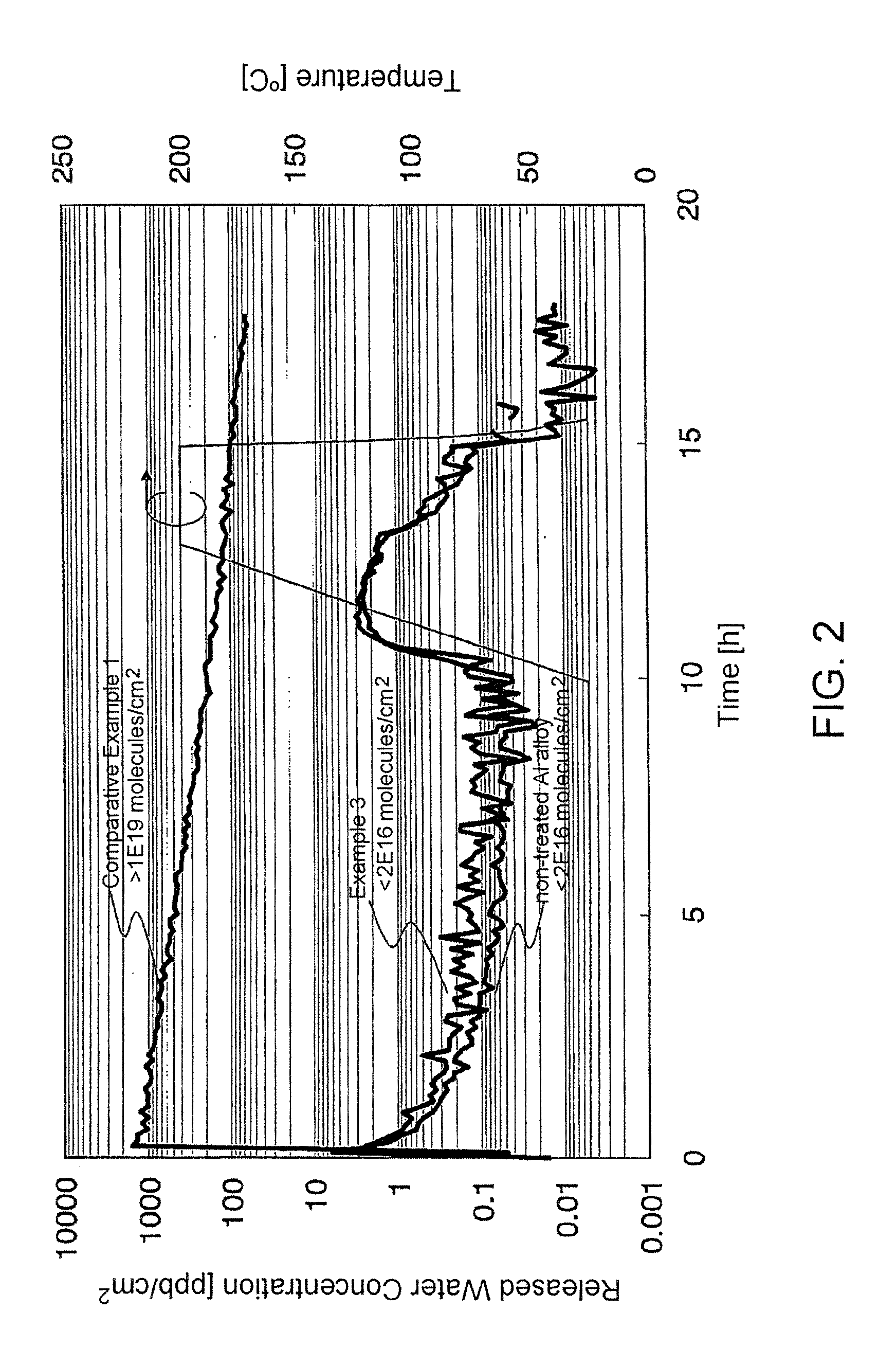Metal oxide film, laminate, metal member and process for producing the same
a technology of metal oxide film and metal member, which is applied in the direction of instruments, natural mineral layered products, transportation and packaging, etc., can solve the problems of large reduction in the performance of vacuum apparatus, particle and occurrence of corrosion, and difference in thermal expansion coefficient, so as to suppress the generation of particles and corrosion, excellent corrosion resistance against chemicals, and perfect resistance
- Summary
- Abstract
- Description
- Claims
- Application Information
AI Technical Summary
Benefits of technology
Problems solved by technology
Method used
Image
Examples
example 1
[0120]1.8 g of tartaric acid was dissolved into 39.5 g of water, then 158 g of ethylene glycol (EG) was added, and then stirring / mixing was carried out. While stirring this solution, 29% aqueous ammonia was added until the pH of the solution reached 7.1, thereby preparing an anodization solution a. In this anodization solution, an A5052 aluminum sample piece of 20×8×1 mm was anodized at a constant current of 1 mA / cm2 until reaching an anodization voltage of 50V and, after 50V was reached, the sample piece was anodized at the constant voltage for 30 minutes. After the reaction, it was sufficiently washed with pure water and then dried at room temperature. The obtained aluminum sample piece with an oxide film was annealed at 300° C. for 1 hour in the IR furnace and then opened to the atmosphere so as to be left standing at room temperature for 48 hours. The thickness of the barrier-type metal oxide film was measured to be 0.08 μm. No cracks were observed. The water release amount was ...
example 2
[0122]An oxide film was formed in the same manner as in Example 1 except that the anodization voltage was set to 100V. The thickness of the barrier-type metal oxide film was measured to be 0.15 μm. No cracks were observed. The water release amount was measured to be 2E16 molecules / cm2 or less.
example 3
[0123]An oxide film was formed in the same manner as in Example 1 except that the anodization voltage was set to 200V. The thickness of the barrier-type metal oxide film was measured to be 0.30 μm. No cracks were observed. The water release amount was measured to be 2E16 molecules / cm2 or less.
PUM
| Property | Measurement | Unit |
|---|---|---|
| thickness | aaaaa | aaaaa |
| thickness | aaaaa | aaaaa |
| pH | aaaaa | aaaaa |
Abstract
Description
Claims
Application Information
 Login to View More
Login to View More - R&D
- Intellectual Property
- Life Sciences
- Materials
- Tech Scout
- Unparalleled Data Quality
- Higher Quality Content
- 60% Fewer Hallucinations
Browse by: Latest US Patents, China's latest patents, Technical Efficacy Thesaurus, Application Domain, Technology Topic, Popular Technical Reports.
© 2025 PatSnap. All rights reserved.Legal|Privacy policy|Modern Slavery Act Transparency Statement|Sitemap|About US| Contact US: help@patsnap.com



